Wednesday 29 September, 2010, 14:36 - Radio Randomness
Posted by Administrator
When is a radio not a radio? Posted by Administrator
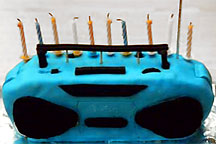 When it's a cake? Well obviously, but it wouldn't be a Wireless Waffle article if it was about cake now would it? Waffles perhaps, but cake?
When it's a cake? Well obviously, but it wouldn't be a Wireless Waffle article if it was about cake now would it? Waffles perhaps, but cake?Anyhow the correct answer is 'When it's a Feynman Radio'. What, I hear you ask, is a Feynman Radio. In order to answer that we have to step back in time to the works of the Maestro James Clerk Maxwell. His Electromagnetic Wave Equation is the mathematical basis of all radio signals, propagation and so forth and desribes how radio waves travel.
Maxwell's equations (in common with many) square numbers before operating on them. One of the key numbers which is in Maxwell's equation is 't' standing for 'time'. The equations describe how Electromagnetic (radio) waves change with time. However, the factor which accounts for time is squared. Now this in itself may not seem important BUT the square of a negative number is the same as the square of a positive one. So, according to Maxwell's equations, a radio wave will look identical whether it has travelled 5 seconds forwards in time or 5 seconds backwards in time! Whoa! Hang on there a minute (or minus a minute). Does this mean that every radio transmitter emits two waves, one which travels forward in time and one which travels backwards? Well that's where Richard Feynman comes in. He argues that not only is this true, but that it is true of all atomic and sub-atomic particles and that for every occurance where something travels forward in time, the same thing happens and travels backwards.
But this is rubbish right? If it were true, we would be bombarded by endless radio signals and light beams from the future. This, argue many people, is evidence that the whole idea of signals travelling backwards in time is just a mathematical theory and not a practical reality. Others argue that the whole notion of 'deja vu' is a perfect illustration of why there must be a way of seeing into the future.
But maybe the fact that we can't hear 'backwards' radio signals is down to something much more straightforward. For example:
* Radio signals travel at the speed of light. Those coming backwards from the future would cross our own path going backwards at the speed of light. We, on the other hand are travelling fowards at the speed of light. Our paths, therefore, cross at twice the speed of light which means the backwards signals would be, to all intents and purposes, invisible.
* Radio signals travelling backwards from the future would be on negative frequencies. As all existing radio receivers only tune to positive frequncies, ie those above 0 MHz, we are unable to receive them. A receiver tuned to minus 900 kHz would presumably receive future radio broadcasts perfectly well.
 Here at Wireless Waffle headquarters, significant effort is being put into the development of a negative frequency radio, or an 'oidar' as we like to call it. Using things such as negative impedance converters we are seeking to synthesise a capacitor of several hundred negative picoFarads and an inductor of the appropriate number of negative microHenries such that they resonate at a negative frequency. Using a 'edoid' we hope to rectify any signals recived to feed a set of headphones. A negative antenna (an 'annetna') is proving more difficult, however we believe that a modified slot antenna in which the radiating element is a hole in a plate of metal rather than a traditional antenna which is metal in the middle of a hole (eg free space) may just do the job. Burying the annetna underground may also help but until the whole receiver is functioning it will be difficult to check.
Here at Wireless Waffle headquarters, significant effort is being put into the development of a negative frequency radio, or an 'oidar' as we like to call it. Using things such as negative impedance converters we are seeking to synthesise a capacitor of several hundred negative picoFarads and an inductor of the appropriate number of negative microHenries such that they resonate at a negative frequency. Using a 'edoid' we hope to rectify any signals recived to feed a set of headphones. A negative antenna (an 'annetna') is proving more difficult, however we believe that a modified slot antenna in which the radiating element is a hole in a plate of metal rather than a traditional antenna which is metal in the middle of a hole (eg free space) may just do the job. Burying the annetna underground may also help but until the whole receiver is functioning it will be difficult to check.Occasionally Wireless Waffle has been known to produce a few spoof entries (especially around April 1st!) however the Feynman Radio is real (try checking on the web). Our attempts to develop an oidar however may just be a reverse-time echo of something we failed to achieve several years from now.
1 comment
( 1650 views )
| permalink
| 



 ( 2.9 / 67703 )
( 2.9 / 67703 )




 ( 2.9 / 67703 )
( 2.9 / 67703 )
Tuesday 27 July, 2010, 17:20 - Radio Randomness
Posted by Administrator
Posted by Administrator
 Last summer, here at Wireless Waffle, we came up with a design for an increadible piece of beach-wear for the short-wave listener which we cristened the 'Wireless Waffle Super Signal Holiday HF Antenna Apparel'. Not only has this become the must have item for improving reception whilst soaking up the sun, devotees have coined the nickname, 'SuSi' and it's an idea that has clearly caught on. At the end of our revelation of this unbelievable breakthrough in summer attire last year, we asked you to submit your own photos of the 'SuSi' which we would then share with other Wireless Waffle readers. And submit them you did! Here we present the 2010 SuSi Snapshot Selection. Together with the original device, it is enthralling to see so many variants in use, however we have our doubts about how effective some of the modified versions might be - so together with your photos, we have also included our view on how well the device pictured might perform.
Last summer, here at Wireless Waffle, we came up with a design for an increadible piece of beach-wear for the short-wave listener which we cristened the 'Wireless Waffle Super Signal Holiday HF Antenna Apparel'. Not only has this become the must have item for improving reception whilst soaking up the sun, devotees have coined the nickname, 'SuSi' and it's an idea that has clearly caught on. At the end of our revelation of this unbelievable breakthrough in summer attire last year, we asked you to submit your own photos of the 'SuSi' which we would then share with other Wireless Waffle readers. And submit them you did! Here we present the 2010 SuSi Snapshot Selection. Together with the original device, it is enthralling to see so many variants in use, however we have our doubts about how effective some of the modified versions might be - so together with your photos, we have also included our view on how well the device pictured might perform. This first picture was sent in by Jim Thrisby of Humberside and was taken in his laboratory with the device under test conditions, rather than out in the field. The unit in question has been modified to include a double, side-mounted dipole which will imbue it with some directionality. The use of an interconnecting cross-bar, however, will act as a short-circuit at higher frequencies and may limit the broadband functionality of the device. The inclusion of three distinct connection pads does, however, offer the wearer some flexibility in adopting the best position for reception whilst allowing the interconnecting wires not to get in the way.
This first picture was sent in by Jim Thrisby of Humberside and was taken in his laboratory with the device under test conditions, rather than out in the field. The unit in question has been modified to include a double, side-mounted dipole which will imbue it with some directionality. The use of an interconnecting cross-bar, however, will act as a short-circuit at higher frequencies and may limit the broadband functionality of the device. The inclusion of three distinct connection pads does, however, offer the wearer some flexibility in adopting the best position for reception whilst allowing the interconnecting wires not to get in the way.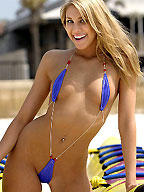 This next image came from Tyrone Mulligan from South Carolina and shows a similar variant to that sent in by Jim. In this case, however, the horizontal interconnecting cross-bar is missing and its omission should ensure a wider frequency response. The three interconnection pads are also present, however the triangular (instead of square) shape and blue paint used to make them 'look pretty' may introduce a high impedance into the connection which is undesirable. The use of a conductive gel or paint will ensure a more solid contact. The modified SuSi is shown in use under good conditions and is clearly being well received by the wearer.
This next image came from Tyrone Mulligan from South Carolina and shows a similar variant to that sent in by Jim. In this case, however, the horizontal interconnecting cross-bar is missing and its omission should ensure a wider frequency response. The three interconnection pads are also present, however the triangular (instead of square) shape and blue paint used to make them 'look pretty' may introduce a high impedance into the connection which is undesirable. The use of a conductive gel or paint will ensure a more solid contact. The modified SuSi is shown in use under good conditions and is clearly being well received by the wearer.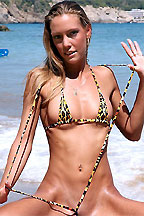 Tuning of a SuSi should not require any user intervention, however some experimenters such as Dave Brookes of Sydney, Australia, have suggested that some manual adjustment to the position of the various connecting wires can improve the clarity of reception. His photo shows a relatively standard SuSi but in which the support structure has been angled so as to increase the capture of incoming waves. Dave tells us that by using the device in this way, it is possible to receive many more short-waves and even some medium and long waves, but that effectiveness was reduced as it was too easy to get 'Chile' (or that's what we think Dave said).
Tuning of a SuSi should not require any user intervention, however some experimenters such as Dave Brookes of Sydney, Australia, have suggested that some manual adjustment to the position of the various connecting wires can improve the clarity of reception. His photo shows a relatively standard SuSi but in which the support structure has been angled so as to increase the capture of incoming waves. Dave tells us that by using the device in this way, it is possible to receive many more short-waves and even some medium and long waves, but that effectiveness was reduced as it was too easy to get 'Chile' (or that's what we think Dave said).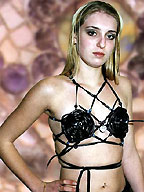 This photo, which arrived by e-mail from Harman Tallow of Newquay, Cornwall, is apparently an attempt to use some Cornish witchcraft to improve the device's effectiveness. Whilst there addition of the two 'tuning coils' may improve the reception in some directions they also act to obscure significant amounts of the underlying support structure and may even weigh it down to produce a highly undesirable 'sag' in performance at some wavelengths. According to Harman, the field trials were relatively successful in that it was easier to mount the device on the support structure compared to the original design, but that overall, the reception was disappointing.
This photo, which arrived by e-mail from Harman Tallow of Newquay, Cornwall, is apparently an attempt to use some Cornish witchcraft to improve the device's effectiveness. Whilst there addition of the two 'tuning coils' may improve the reception in some directions they also act to obscure significant amounts of the underlying support structure and may even weigh it down to produce a highly undesirable 'sag' in performance at some wavelengths. According to Harman, the field trials were relatively successful in that it was easier to mount the device on the support structure compared to the original design, but that overall, the reception was disappointing.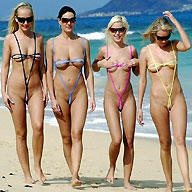 We were particularly impressed by the efforts of Damian Hextonwick. Damian doesn't tell us where he's from but does indicate that using multiple devices in the form of a 'phased array' produces one of the largest increases in the achievable range of the device that he has witnessed (though we once again note the erroneous use of the bandwidth restricting horizontal cross-strut). His attempt to join four such devices together as shown in his picture, produced sufficient voltage to excite receivers which were at a significant distance from the array. Whereas it is necessary to connect directly to a single device to get its benefits, standing in close proximity to multiple interconnected devices has impressive results.
We were particularly impressed by the efforts of Damian Hextonwick. Damian doesn't tell us where he's from but does indicate that using multiple devices in the form of a 'phased array' produces one of the largest increases in the achievable range of the device that he has witnessed (though we once again note the erroneous use of the bandwidth restricting horizontal cross-strut). His attempt to join four such devices together as shown in his picture, produced sufficient voltage to excite receivers which were at a significant distance from the array. Whereas it is necessary to connect directly to a single device to get its benefits, standing in close proximity to multiple interconnected devices has impressive results.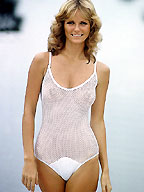 Finally, Heinz Wiedemann of North Germany has attempted to take the concept of the SuSi one step further and produce a device which can be used for satellites. By expanding upon the concept of a mesh dish, he has produced this mesh SuSi which has an integral 'low navel block' (LNB) at its lowest point which focuses incoming signals. Unfortunately, the alignment proves very critical and without careful hands-on positining of the LNB, the supporting structure becomes badly distorted leading to highly unsatisfactory reception. Heinz does add, however, that the hands-on nature of this variant of the SuSi has many distinct benefits which he then refuses to scientifically quantify, rendering the results of his experiments somewhat suspect.
Finally, Heinz Wiedemann of North Germany has attempted to take the concept of the SuSi one step further and produce a device which can be used for satellites. By expanding upon the concept of a mesh dish, he has produced this mesh SuSi which has an integral 'low navel block' (LNB) at its lowest point which focuses incoming signals. Unfortunately, the alignment proves very critical and without careful hands-on positining of the LNB, the supporting structure becomes badly distorted leading to highly unsatisfactory reception. Heinz does add, however, that the hands-on nature of this variant of the SuSi has many distinct benefits which he then refuses to scientifically quantify, rendering the results of his experiments somewhat suspect.Overall, we have been highly impressed by the look, feel and ingenuity of the various models of SuSi that have been submitted to us. Please keep up the experiments and remember to send pictures your results to us. We can't wait to see what the next year of experimentation may bring and to share the joyous fruits of your labours and to enjoy the summer sunshine wherever you may be.
Sunday 13 June, 2010, 11:43 - Radio Randomness
Posted by Administrator
Most short-wave listeners would probably love to know whether reception conditions are good or not at any given time on any particular band. One way to do this might be to use an on-line tool, such as the one shown on the right, which tries to interpret solar conditions (eg sunspot numbers) to provide an indication of whether specific frequencies are likely to perform well. This is a good start but gives no idea of from which areas signal are being received. Knowing that frequencies below 10 MHz are suject to 'fair' propagation tells you little about whether this is to the East, West, North or some other direction.Posted by Administrator
Another way, therefore, might be to try and tune in to radio broadcasts from specific areas to see what can actually be received. This works pretty well and tools like that provided at short-wave.info can help you find where signals are being transmitted from and thus what else you might be able to hear.
But radio broadcasts are not the only short-wave transmissions which can be regularly received. There are many other signals which can give indications of propagation. Radio amateurs have networks of worldwide beacons. These can be found on frequencies of 14100, 18110, 21150, 24930 and 28200 kHz and each beacon sends its callsign in morse code at a relatively high power (100 Watts) and then decreases the power down to a few milliWatts. Once it is done, another beacon uses the frequency, with the frequencies time shared between them. These beacons (and other amateur beacons which operate) provide an alternative means of testing propagation. Of course if you can't read morse code (CW) then they are of little use. Also, frequencies below 14 MHz are not well served and though 100 Watts is a relatively strong signal for radio amateurs, it is not in the kiloWatt region which radio broadcasters use and thus may be more difficult to hear for the average short wave listener.
At Wireless Waffle it was realised that it would be useful if there were other means of checking propagation which didn't rely on knowing morse code, covered more frequencies, was easy to receive, and would give an idea of in which direction signals were coming from. Step up the the challenge volmets!
 A volmet is a radio broadcast of weather information (meteo in French) for aircraft (vol is French for flight). Volmets exist in many countries around the world and there are several on short-wave which use relatively high power transmissions (normally between 1 and 10 kW) on various frequencies ranging from 2.8 to around 15 MHz. Most frequencies are shared between multiple volmets who take it in turn to broadcast local weather conditions for 5 minutes and then pass the frequency on to the next station (sound familiar?)
A volmet is a radio broadcast of weather information (meteo in French) for aircraft (vol is French for flight). Volmets exist in many countries around the world and there are several on short-wave which use relatively high power transmissions (normally between 1 and 10 kW) on various frequencies ranging from 2.8 to around 15 MHz. Most frequencies are shared between multiple volmets who take it in turn to broadcast local weather conditions for 5 minutes and then pass the frequency on to the next station (sound familiar?) There is a relatively up-to-date list of active, inactive and planned volmets available on-line. One evening recently a receiver was set on 6676 kHz. This is the frequency used by a series of Asian volmets in Australia, India, Thailand, Pakistan and Singapore, each of which uses the frequency for 5 minutes at a time, suprisingly at least three of these were clearly heard (though there was some interference from the Echo Charlie band radio pirates who also use these frequencies!) The following evening on the same frequency, nada, nix, nothing. None of them were audible. An almost perfect example of the use of these stations as propagation beacons.
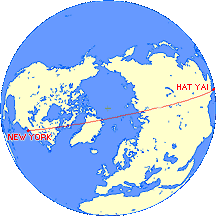 An even odder one but of startling usefulness is the frequency of 13270 kHz. This is used by two volmets, one in the USA (New York) and one in Canada (Gander). It is also used for a digital HF radio system for aicraft to report their position when outside of radar coverage called ACARS by a station in Hat Yai in Thailand. Tuning to this frequency recently, both the volmet and the ACARS service could be heard! The New York volmet weather man was churning out temperatures and dew points and the like, whilst over the top came the occasional 'beep fluff' noise of ACARS. It seems a little odd that two aeronautical services would be put on the same frequency but when you consider that Hat Yai is 9190 miles from New York (as the crow flies - though he would get pretty cold whilst going over the north pole) then the probability of interference is probably too small to worry about under normal circumstances. It makes a very handy propagation beacon though - almost around the whole world on one frequency!
An even odder one but of startling usefulness is the frequency of 13270 kHz. This is used by two volmets, one in the USA (New York) and one in Canada (Gander). It is also used for a digital HF radio system for aicraft to report their position when outside of radar coverage called ACARS by a station in Hat Yai in Thailand. Tuning to this frequency recently, both the volmet and the ACARS service could be heard! The New York volmet weather man was churning out temperatures and dew points and the like, whilst over the top came the occasional 'beep fluff' noise of ACARS. It seems a little odd that two aeronautical services would be put on the same frequency but when you consider that Hat Yai is 9190 miles from New York (as the crow flies - though he would get pretty cold whilst going over the north pole) then the probability of interference is probably too small to worry about under normal circumstances. It makes a very handy propagation beacon though - almost around the whole world on one frequency!Friday 7 August, 2009, 09:31 - Radio Randomness
Posted by Administrator
August is almost universally, the world over, the month when schools are out and people head off on their well deserved and hard earned summer vacations. However, here at Wireless Waffle have received a number of worried e-mails from radio lovers who are concerned that whilst they are away on holiday they will not be able to enjoy listening to their favourite short-wave radio transmissions, whether the news on their favourite international broadcaster or the messages from their friendly neighbourhood secret service spy numbers station.Posted by Administrator
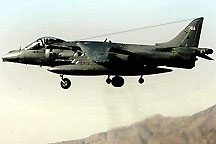 Being equally worried, we have been searching for an answer to this annual seasonal dilemma and think that we have stumbled across the perfect solution. Study, if you will, the picture on the right. This is one of the Royal Air Force's fabled Harrier Jump Jets. If you look closely you will notice that strung from the rear tail-fin to a point just behind the pilot's cabin on the fuselage is a thin wire antenna. Normally this wire is too thin to be seen in such a small picture but we have enhanced it to make it more visible. This is an HF (a.k.a. short-wave) antenna which is used for air to ground communication. Similarly strung aerials can be found on civil aircraft and on many warships, stretching from the top of the radar tower to somewhere close to the deck.
Being equally worried, we have been searching for an answer to this annual seasonal dilemma and think that we have stumbled across the perfect solution. Study, if you will, the picture on the right. This is one of the Royal Air Force's fabled Harrier Jump Jets. If you look closely you will notice that strung from the rear tail-fin to a point just behind the pilot's cabin on the fuselage is a thin wire antenna. Normally this wire is too thin to be seen in such a small picture but we have enhanced it to make it more visible. This is an HF (a.k.a. short-wave) antenna which is used for air to ground communication. Similarly strung aerials can be found on civil aircraft and on many warships, stretching from the top of the radar tower to somewhere close to the deck. These antennas actually work quite well and though a decent antenna tuner is needed to provide a good match at the range of frequencies on which military HF communications normally take place, they produce relatively good results because:
* the sloping nature of the antenna offers a degree of mixed polarisation, increasing received and transmitted signal strengths compared to a horizontal or vertical antenna (as with an inverted-V antenna)
* the position of the antenna above the body of the aircraft means that the aircraft acts as a reflector, directing signals upwards towards the ionosphere
* the antenna can be reconfigured to use part of the aircraft body to form a loop antenna where this is more effective
 In a flash of inspiration, the Wireless Waffle team realised that a very similar antenna could be constructed and tied to a tree on a Caribbean island. However, though a practical and realisable solution, this idea failed to address some of the main difficulties in a number of very important ways:
In a flash of inspiration, the Wireless Waffle team realised that a very similar antenna could be constructed and tied to a tree on a Caribbean island. However, though a practical and realisable solution, this idea failed to address some of the main difficulties in a number of very important ways:1. not all holiday makers carry a roll of suitable wire
2. not all Caribbean beaches have a suitable tree on which to string an antenna
3. where trees exist, the holiday makers with wire may not be able to climb the tree
4. not all summer holidays take place in the Caribbean
Deflated but still keen to find a way forward, the team decanted to the local travel agency to study holiday brochures for alternative antenna mounts. Whilst wandering down the high street, one of the team happened to glance into a sports shop and inspiration struck: what if a suitable antenna could be built into an item of beach apparel such that it went on hoilday with the person concerned without needing to carry wires or tree climbing apparatus.
 After much development, we are therefore very proud to present the 'Wireless Waffle Super Signal Holiday HF Antenna Apparel' (we are still working on a snappier title). In the same vein as the aircraft HF antenna, the wire is strung between the tail-fin of the wearer and a point below the fuselage where their head joins their body. As you will see, it bears a remarkable similarity to the one mounted on the Harrier Jump Jet.
After much development, we are therefore very proud to present the 'Wireless Waffle Super Signal Holiday HF Antenna Apparel' (we are still working on a snappier title). In the same vein as the aircraft HF antenna, the wire is strung between the tail-fin of the wearer and a point below the fuselage where their head joins their body. As you will see, it bears a remarkable similarity to the one mounted on the Harrier Jump Jet.Our thorough tests have shown that the antenna works exceptionally well and is very good at picking up signals. We managed to receive a strong Voice from America (saying something about a drink at the bar), whistles from the military and several numbers. Encouraged by these results, we are currently in discussion with a major radio manufacturer about the sales opportunities for our device and the outlook seems quite positive. Keep an eye open on beaches in your area and please send us pictures of any devices you find in use. If we receive enough we'll post a gallery so that others can see how to assure maximum performance.

